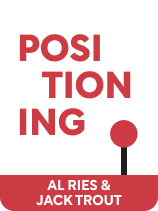

This article is an excerpt from the Shortform book guide to "Positioning" by Al Ries and Jack Trout. Shortform has the world's best summaries and analyses of books you should be reading.
Like this article? Sign up for a free trial here .
Do you have a career progression plan? How can you stand out from the crowd and get the position you want?
While Positioning by Al Ries and Jack Trout is primarily about positioning a business for success, they show how you can apply the same ideas to personal professional advancement. They outline four steps to create a career progression plan and position yourself for success.
Read more to learn how to design a career progression plan based on the principles of Positioning.
Create Your Career Progression Plan
While positioning is most often discussed in the context of marketing a product or company, Ries and Trout say you can use the same principles to position yourself in order to advance your career. They even recommend applying the same overarching strategy: Understand your current position, identify your desired position, select a suitable name, and then chart a course from your current position to your desired position. Here are the four steps to design a career progression plan.
1. Understand Your Current Position
According to Ries and Trout, first you need to understand your current professional positioning. How do others perceive you in terms of your strengths and weaknesses relative to other candidates or employees?
(Shortform note: According to Douglas Stone and Sheila Heen, the key to understanding how people perceive you is learning how to receive feedback effectively. They advise that to stay open to feedback, you should become aware of certain triggers that might prevent you from listening—for example, a relationship trigger might cause you to ignore advice from someone you dislike, or an identity trigger might make you ignore feedback that criticizes who you are as a person. Ironically, the kind of feedback that an identity trigger might block could be especially useful in determining your current position, because it implies a disconnect between how you see your identity (or position) and how someone else sees you.)
2. Identify Your Desired Position
Second, Ries and Trout advise that, as you craft a career progression plan, you must realistically identify your desired professional position. They caution that you can’t be the best at everything to everybody and argue that the biggest challenge in positioning yourself for career success is often figuring out specifically what professional positioning you want.
(Shortform note: While Ries and Trout don’t mention it, we might infer a connection between identifying your desired position and finding an open niche. To identify your desired career positioning, you might need to also identify the niche where you can succeed professionally.)
3. Consider Your Name
It might not be intuitive, but evaluating your name should be part of your career progression plan. Ries and Trout assert that your name is a crucial element of how people perceive you, just as a brand name influences how people perceive products and companies. As with company acronyms, they advise you to avoid going by initials, as they’re less memorable.
Furthermore, they argue that some names intuitively sound more credible than others for a given role. Thus, as with brands, if your name doesn’t support your desired positioning, Ries and Trout recommend changing it or using an assumed name (for example, many authors write under a pen name).
| Your Name and Your Career While the extent to which your name affects your career is a matter of some speculation, studies do show correlations between names and various aspects of career success. For example, people with names that are more common or easier to pronounce are statistically more likely to be hired, and names associated with a certain ethnicity will favorably affect your job outlook in places where that ethnicity is favored by employers. If you think a different name would help advance your career, how should you go about changing it? Ries and Trout don’t provide details on this, but depending on the situation, you may have several options: You could just use an assumed name on your resume. This would be similar to an author using a pen name, or having your coworkers call you by a nickname. It’s simple, costs nothing, and requires no paperwork, but it can backfire if your prospective employer gets suspicious when they find out you’re not using your real name. Many companies require you to show some kind of identification at some point in the application process. Some may require a background check. If you’re hired, you’ll need to provide your legal name along with your social security number to payroll. So the company will find out your real name, one way or another. You could change your legal name. This mitigates the pitfalls of using a nickname, but it’s a long process. Generally, if your name change doesn’t relate to a change in marital status, you’ll have to file a petition, attend a court hearing, and publish your proposed name change in a newspaper, in addition to paying filing fees. You could start an LLC and name it whatever you want. In most states, creating an LLC is much easier than changing your legal name, and the company is a legal entity that can enter into contracts and receive payment. However, this would probably only be an option if you were paid as a contractor rather than an employee. |
4. Chart Your Course
To round out your career progression plan, Ries and Trout offer some specific suggestions for charting a course from your current professional positioning to your desired position.
First, they emphasize the importance of fit. Your boss and company should fit with your values and goals—in other words, your desired positioning. Conversely, your desired positioning should fit with your company’s vision and goals. Ries and Trout advise that when applying or interviewing with a new company, you emphasize this fit. To do so, they advise that you focus on how your strengths match the company’s strengths rather than how your strengths can help the company’s weaknesses.
(Shortform note: Determining whether you fit with the corporate culture is often a significant part of a job interview. If you’re a good fit, your strengths will tend to match what the company values. Thus, Ries and Trout’s advice is consistent with showing that you’ll fit in with the company culture.)
Second, Ries and Trout emphasize the importance of networking and staying in touch with people outside your own organization. They contend that you get most of your big opportunities through these contacts.
(Shortform note: In Give and Take, Adam Grant argues that being a generous person makes it easier to network with people, ultimately leading to career success. He draws a connection between generosity and trust: To cultivate a generous personality, start by giving others the benefit of the doubt. Most of them will reciprocate, building mutual trust in your network. Similarly, he associates generosity with powerless communication: You make yourself more approachable by asking questions, seeking advice, and signaling vulnerability.)
Finally, Ries and Trout emphasize the importance of persistence with your career progression plan, since positioning is inherently a long-term proposition.
(Shortform note: The admonition to persevere is common among career advisers. For example, in A Mind for Numbers, Barbara Oakley asserts that persistence is more important than innate intelligence for your success, both academically and in your career.)

———End of Preview———
Like what you just read? Read the rest of the world's best book summary and analysis of Al Ries and Jack Trout's "Positioning" at Shortform .
Here's what you'll find in our full Positioning summary :
- A strategy of framing your product, service, company, or self against your competitors
- How to use the concept of positioning to further your career development
- Harmful positioning strategies you should avoid






